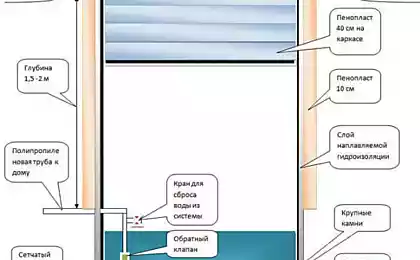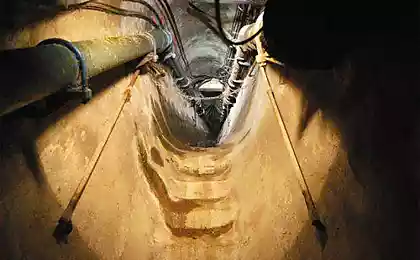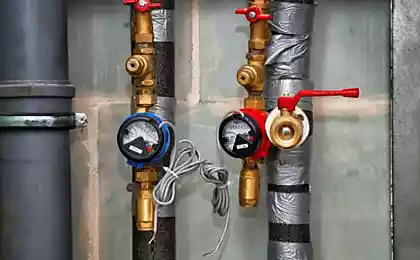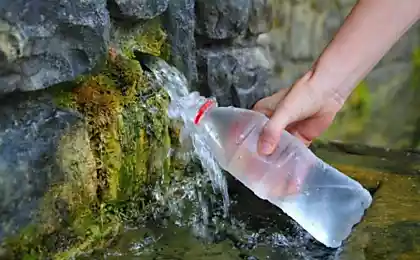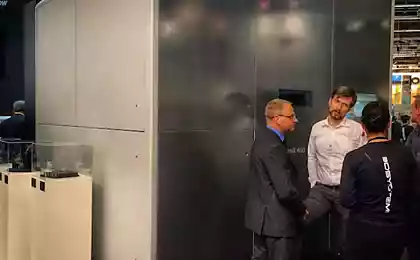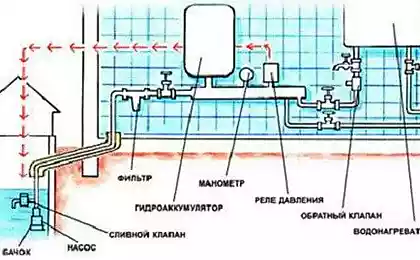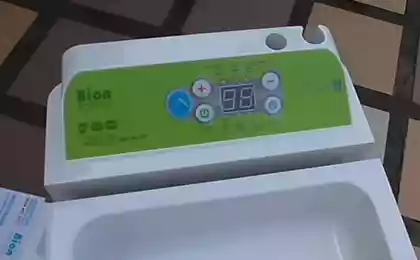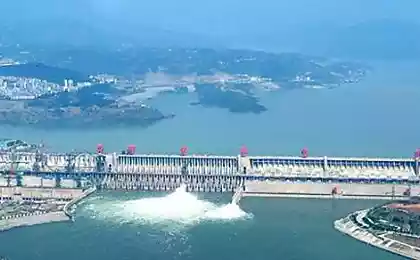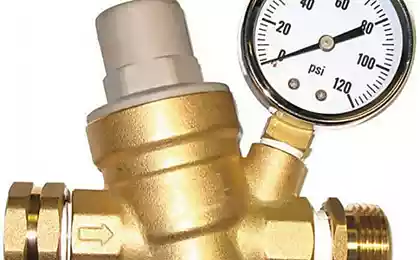142
Hydroelectric power plants in the urban water supply system
The problem of generating the necessary power for the needs of ordinary consumers can be partially solved with the help of technology, which decided to try out in Portland, Oregon. The idea was based on the principle of operation of derivational hydroelectric power plants of non-pressure type, when the flow of water due to the natural slope of the river drives the turbine blades and causes its shaft to rotate, connected to the generator generating electricity.
American engineers from Lucid Energy proposed to install mini-turbines in the city water supply system, which would rotate due to the flow of drinking water pipes supplied to local residents. The main advantage of the technology is the complete absence of any negative impact on the environment, as well as the low cost of electricity obtained in this way. Of course, the capacity of one plant is unlikely to be enough to power even a couple of houses, given the diameter of the pipe, but several mini-HPPs are already able to fully take over the supply of a school or other public institution, as well as reduce electricity costs for local residents.
Also, the placement of a “hydroturbine + generator” bundle in the water supply will contribute to reducing the tariff cost of drinking water by reducing the cost of electricity supply to devices for its purification.
“In Riverside, California, we already have an operational system that generates enough power to take over the city’s streetlights,” said Lucid Energy CEO Greg Semler.
Since the water in the pipes practically does not stop moving, electricity can be generated around the clock, even despite adverse external weather conditions, on which the efficiency of the same solar panels and wind turbines directly depends. However, the laws of physics have not yet been circumvented, so it is proposed to place mini-HPPs only in those sections of the pipeline where there is a suitable inclination and water moves under the action of gravity, and not pumped by the pump. Otherwise, the efficiency of the installation will not be so high and financially justified.
In addition to all the advantages described, turbines are equipped with special sensors to determine the basic parameters of water in the designated area, which should simplify the work of utilities. At the same time, as experts note, insertions from special sections of pipes with a turbine with a diameter of 107 cm placed in them will only slightly affect the speed of water flow and will not require adjustments to the normal mode of functioning of the entire urban water supply system.
“The sensors we integrate will be able to transmit information about the current pressure, deviations from the standards of indicators of which will signal a violation of the tightness of the pipe and the need for its urgent repair. It is assumed that the sensors will analyze the quality of drinking water, once again confirming its safety for the end user, said Mr. Samler.
It is expected that the Lucid Energy unit will be able to reach the nominal indicators of the declared capacity already this spring. This means that the amount of electricity generated through the installation of sections with turbines and generators will be about 1.1 GW / year. If we calculate that on average, residents of one private household consume 300-400 kWh per month, then the electricity generated will be enough to fully provide electricity to about 250 homes.
According to the contract, the private firm Harbourton Alternative, which sponsored the reconstruction of the water pipeline, intends to sell the electricity generated at the mini-HPP to the state and make a profit from it for 20 years, allocating funds to the municipal economy for planned maintenance of installations and their repair.
I would like to note that from the point of view of the author, who is directly related to this topic, the type of hydraulic turbine chosen for the project, resembling a wind turbine with a vertical axis of rotation, departs from the usual standards. For this reason, several questions arise at once, one of which concerns the efficiency of a hydraulic turbine with such an unusual design for it. In the decoding needs and formulation about minor, as the developers claim, changes in the speed of water flow. The presence in a small area of the water supply at once of several such "shelters", covering a considerable part of the area of the cross-section of the pipe, will lead to a tangible decrease in its throughput.
The authors of the idea believe that the prospects for the introduction of their offspring in states such as California, where 20% of the total amount of electricity consumed is from the operation of the central water supply system, are undeniably high. At the same time, as noted above, mini-HPPs will allow you to monitor the quality of water and timely detect damage to a particular section of the pipe.
P.S. And remember, just by changing our consumption, we change the world together! © Join us on Facebook , VKontakte, Odnoklassniki
Source: www.3dnews.ru/909874
American engineers from Lucid Energy proposed to install mini-turbines in the city water supply system, which would rotate due to the flow of drinking water pipes supplied to local residents. The main advantage of the technology is the complete absence of any negative impact on the environment, as well as the low cost of electricity obtained in this way. Of course, the capacity of one plant is unlikely to be enough to power even a couple of houses, given the diameter of the pipe, but several mini-HPPs are already able to fully take over the supply of a school or other public institution, as well as reduce electricity costs for local residents.
Also, the placement of a “hydroturbine + generator” bundle in the water supply will contribute to reducing the tariff cost of drinking water by reducing the cost of electricity supply to devices for its purification.
“In Riverside, California, we already have an operational system that generates enough power to take over the city’s streetlights,” said Lucid Energy CEO Greg Semler.
Since the water in the pipes practically does not stop moving, electricity can be generated around the clock, even despite adverse external weather conditions, on which the efficiency of the same solar panels and wind turbines directly depends. However, the laws of physics have not yet been circumvented, so it is proposed to place mini-HPPs only in those sections of the pipeline where there is a suitable inclination and water moves under the action of gravity, and not pumped by the pump. Otherwise, the efficiency of the installation will not be so high and financially justified.
In addition to all the advantages described, turbines are equipped with special sensors to determine the basic parameters of water in the designated area, which should simplify the work of utilities. At the same time, as experts note, insertions from special sections of pipes with a turbine with a diameter of 107 cm placed in them will only slightly affect the speed of water flow and will not require adjustments to the normal mode of functioning of the entire urban water supply system.
“The sensors we integrate will be able to transmit information about the current pressure, deviations from the standards of indicators of which will signal a violation of the tightness of the pipe and the need for its urgent repair. It is assumed that the sensors will analyze the quality of drinking water, once again confirming its safety for the end user, said Mr. Samler.
It is expected that the Lucid Energy unit will be able to reach the nominal indicators of the declared capacity already this spring. This means that the amount of electricity generated through the installation of sections with turbines and generators will be about 1.1 GW / year. If we calculate that on average, residents of one private household consume 300-400 kWh per month, then the electricity generated will be enough to fully provide electricity to about 250 homes.
According to the contract, the private firm Harbourton Alternative, which sponsored the reconstruction of the water pipeline, intends to sell the electricity generated at the mini-HPP to the state and make a profit from it for 20 years, allocating funds to the municipal economy for planned maintenance of installations and their repair.
I would like to note that from the point of view of the author, who is directly related to this topic, the type of hydraulic turbine chosen for the project, resembling a wind turbine with a vertical axis of rotation, departs from the usual standards. For this reason, several questions arise at once, one of which concerns the efficiency of a hydraulic turbine with such an unusual design for it. In the decoding needs and formulation about minor, as the developers claim, changes in the speed of water flow. The presence in a small area of the water supply at once of several such "shelters", covering a considerable part of the area of the cross-section of the pipe, will lead to a tangible decrease in its throughput.
The authors of the idea believe that the prospects for the introduction of their offspring in states such as California, where 20% of the total amount of electricity consumed is from the operation of the central water supply system, are undeniably high. At the same time, as noted above, mini-HPPs will allow you to monitor the quality of water and timely detect damage to a particular section of the pipe.
P.S. And remember, just by changing our consumption, we change the world together! © Join us on Facebook , VKontakte, Odnoklassniki
Source: www.3dnews.ru/909874
